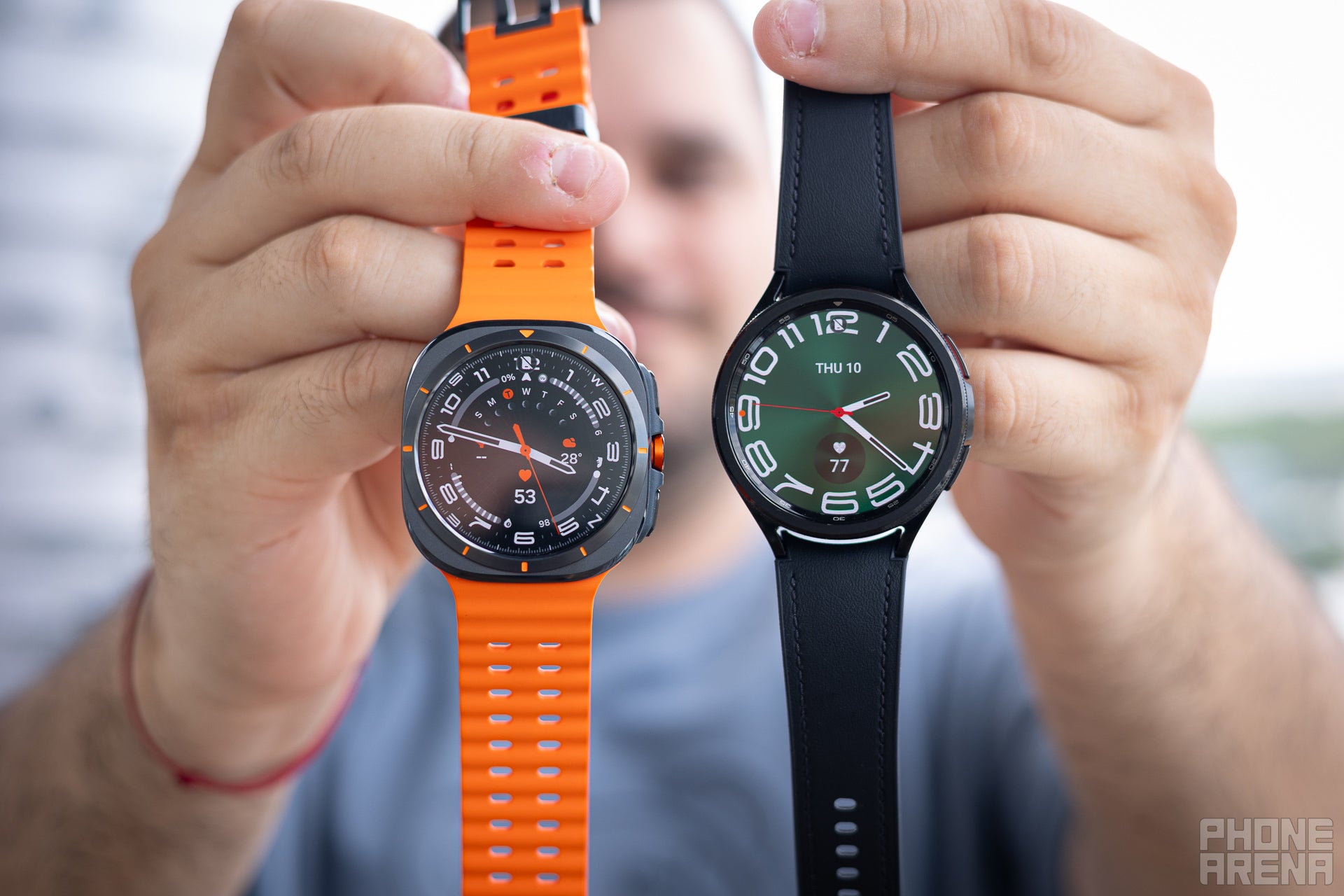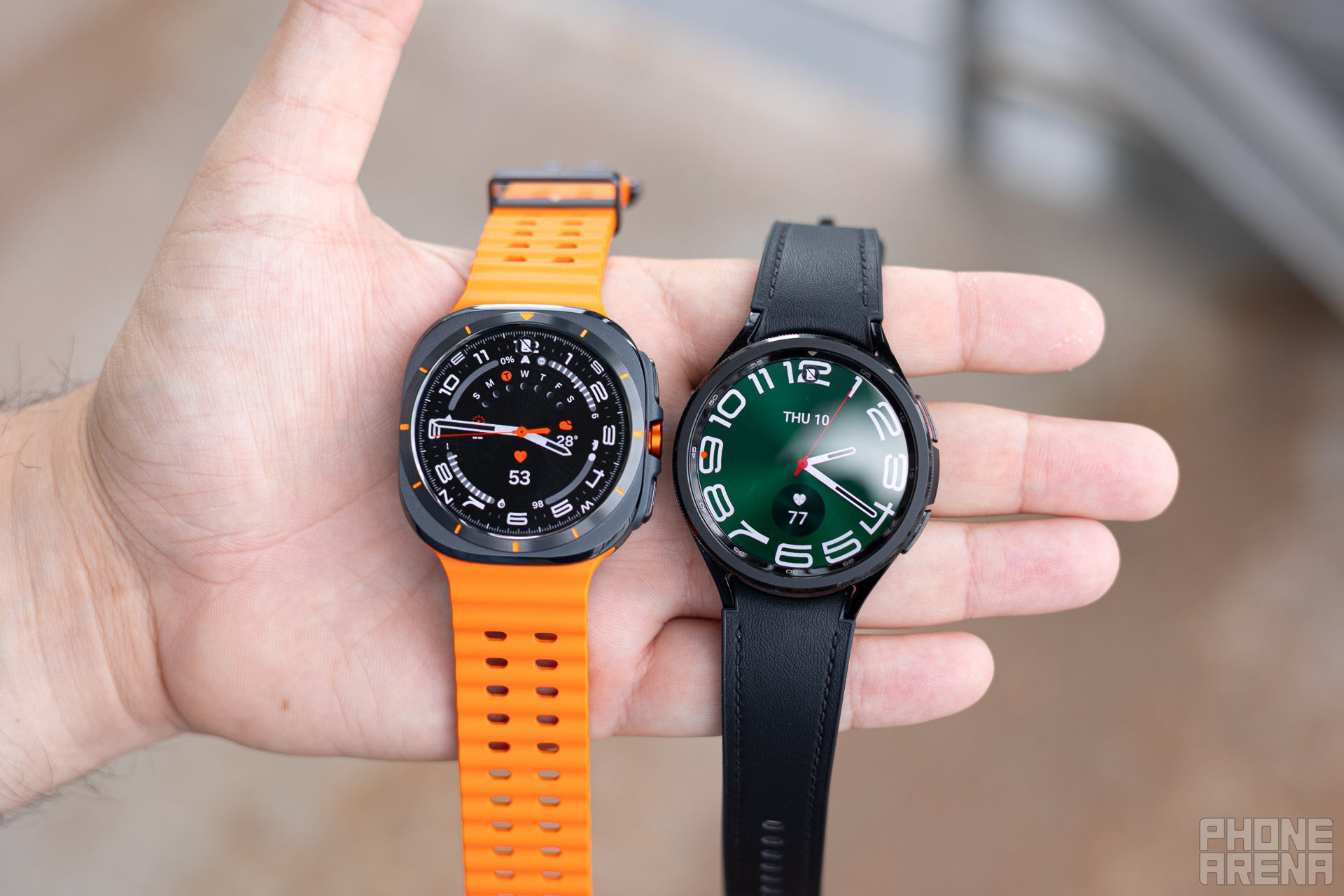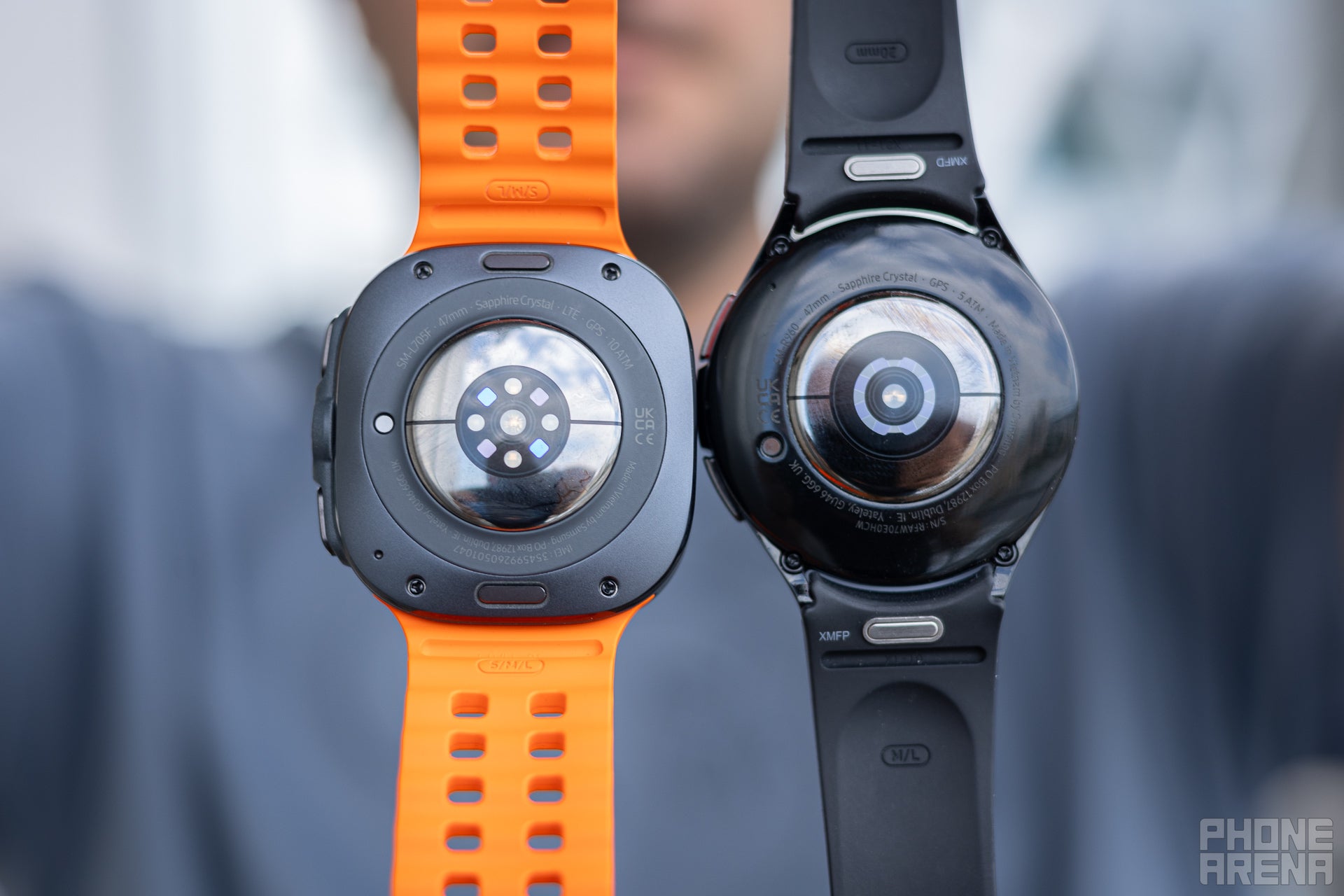Galaxy Watch Ultra vs Galaxy Watch 6 Classic: Hold off on upgrading
We may earn a commission if you make a purchase from the links on this page.

Intro
The Galaxy Watch Ultra is Samsung’s bold leap into the super-premium smartwatch space, packed with cutting-edge features and a striking new design. With a faster chipset, a larger battery, and a fresh aesthetic, it aims to set a new standard for Wear OS devices. Not terribly original,
But the Ultra isn’t stepping into an empty spotlight—it’s following the highly regarded Galaxy Watch 6 Classic. Known for its timeless elegance and standout features like the iconic rotating bezel, the Watch 6 Classic set the bar high, combining sophistication with functionality in a way that resonated with fans.
So, how does the Galaxy Watch Ultra compare to its predecessor? Does it bring enough to the table to justify the upgrade, or does the Watch 6 Classic’s charm still hold strong? Let’s explore which one might be the perfect companion for your wrist.
But the Ultra isn’t stepping into an empty spotlight—it’s following the highly regarded Galaxy Watch 6 Classic. Known for its timeless elegance and standout features like the iconic rotating bezel, the Watch 6 Classic set the bar high, combining sophistication with functionality in a way that resonated with fans.
Galaxy Watch Ultra vs Galaxy Watch 6 Classic: differences
- Single 47mm size vs 43/47mm sizes
- 3nm Exynos W1000 chip vs 5nm Exynos W930 chip
- Titanium case vs stainless steel case
- No rotating bezel vs rotating bezel
- 32GB vs 16GB on-board storage
- 590mAh vs 424mAh battery
- 10 ATM up to 10 minutes vs IP68 (1.5m for 30 minutes) water resistance
Table of Contents:
Also check out:
- Galaxy Watch 7 review
- Galaxy Watch Ultra review
- Galaxy Watch Ultra vs Galaxy Watch 6 Classic
- Galaxy Watch Ultra vs Galaxy Watch 5 Pro: Samsung's most rugged smartwatches
- Samsung Galaxy Watch 6 Classic vs Galaxy Watch 5 Pro: Beauty versus brawn
Design & Sizes
The hip new versus the classics

Samsung's largest smartwatches to date (Image Credit-PhoneArena)
The Galaxy Watch Ultra scores a new design language. It boasts a squircle case with a round screen; the case is made of titanium, while sapphire glass protects the display. The Galaxy Watch Ultra comes with three buttons on deck: two standard ones and a customizable Quick Button between them.
Samsung's new smartwatch is available in a single 47mm size only. It's also shock-proof, IP68 dust- and water-resistant. Actually, it's rated for up to 100 meters for as long as 10 minutes, so diving with the watch is totally something you could try.
What you might not try, however, is interacting with the interface with the help of the Galaxy Watch Ultra's rotating bezel, on the account of it lacking one. Sadly, this useful and signature Samsung smartwatch feature is not available on this watch, likely because it'd compromise the exceptional water resistance.
Meanwhile, last year's Galaxy Watch 6 Classic came with a classic round case made of stainless steel, with sapphire glass on top to protect against scratches. The watch came in two distinct size versions, 43mm and 47mm ones. The Galaxy Watch 6 Classic came with full IP68 water resistance, but nothing more. The watch came with a hardware rotating bezel, though, which allows you to quickly navigate the interface and interact with the functions of the watch.

The Galaxy Watch 6 Classic feels more convenient to wear (Image Credit-PhoneArena)
Which smartwatch is more convenient to wear? Undoubtedly, the Galaxy Watch 6 Classic. It's more compact and slightly lighter with the stock band, and although it's just as big, it feels like a more convenient accessory to carry on your wrist. It also looks classier thanks to its timeless design that should pass the test of time.
Colors-wise, the Watch Ultra can be yours in Titanium Gray, Titanium Silver, and Titanium White, whereas the Galaxy Watch 6 Classic comes in Black and Silver.
Display-wise, both 47mm versions of both smartwatches have the same 1.5-inch AMOLED display with 480 by 480-pixel resolution. Aside from being sharp and vivid, those two can also get quite bright. However, the new Galaxy Watch Ultra has the upper hand here with peak brightness of 3,000 nits, while the Galaxy Watch 6 Classic maxes out at 2,000 nits.
Bands
Rugged versus classy

You can't interchange those bands, sadly (Image Credit-PhoneArena)
"Dress for the job you want" is a saying that perfectly encapsulates these two watches. The Galaxy Watch 6 Classic comes with a faux leather strap that would easily suit any dress watch given how classy and elegant it is.
At the same time, the rugged Galaxy Watch Ultra is available with three rugged bands: Marine, aimed at divers, a textile Trailband one, and finally, a silicone Peakform one.
Are these two interchangeable? Sadly, no. The Galaxy Watch 6 Classic employs classic watch lugs that let you attach just about any similarly sized watch band, whereas the Galaxy Watch Ultra uses a new system that uses slots on the watch case itself.
Software & Features
Similar features
Both smartwatches are running Wear OS with the One UI Watch interface on top of it. The Galaxy Watch Ultra is, however, the first smartwatch with Wear OS 5, the latest version of the OS. Neither watch works with the iPhone, and while Android phones are supported, some features work best with a Galaxy phone (ECG, Blood pressure monitoring).
The Galaxy Watch Ultra comes with a ton of new features. There is enhanced activity tracking along with new multi-sport tracking; triathlon athletes, for example, will be pleased to know that they can now customize and track three sports one after the other, without having to start a new activity tracking after a given stint.
Race is another Galaxy Watch Ultra feature, which allows you to challenge yourself and compete against your previous results. This could boost motivation and allow you to achieve better results.
Another new metric (still in beta) is the AGEs (Advanced Glycation End Products) Index, which aims to measure your biological aging process non-invasively. As you grow older, AGEs naturally accumulate, and the Galaxy Watch Ultra will try to predict if you're at risk of contracting age-related diseases.
Some cool new gestures on the Galaxy Watch Ultra include Double Pinch (inspired from the Apple Watch), Shake to dismiss, and Knock Knock. The initial one is likely to be the most popular as it lets you answer calls, dismiss alerts, launch apps, control music playback, and so on. We've already seen that feature on the Apple Watch, so it's not terribly original.
Some cool new gestures on the Galaxy Watch Ultra include Double Pinch (inspired from the Apple Watch), Shake to dismiss, and Knock Knock. The initial one is likely to be the most popular as it lets you answer calls, dismiss alerts, launch apps, control music playback, and so on. We've already seen that feature on the Apple Watch, so it's not terribly original.
Heart Rate Accuracy

BioActive sensors on the Galaxy Watch Ultra, Galaxy Watch 6 Classic (Image Credit-PhoneArena)
Heart rate monitoring is one of the essential features of most smartwatches, and sadly, Samsung smartwatches have been all over the place with their overall accuracy. Samsung has thrown in a new heart rate sensor in the Galaxy Watch Ultra's BioActive sensor, but it's uncertain if the change is for the good.
Irregular data and anomalies are currently plaguing the Galaxy Watch Ultra, which registered a few ghost spikes in my heart rate during the review process. The Galaxy Watch 6 Classic has the benefit of several software patches, so I'd be more inclined to trust the data from the Galaxy Watch 6 Classic.
Sleep Tracking Accuracy
Both smartwatches offer very detailed and mostly similar sleep accuracy, with the Galaxy Watch Ultra getting the upper hand with its FDA-approved sleep apnea monitoring. You get tons of data about your sleep in the Samsung Health app, broken down and explained as comprehensively as possible. Diving deep and exploring said data is a very rewarding experience.
If any of these two Galaxy Watches detect some irregularities in your sleep or notice you're not getting enough shut-eye, you'd get coached on some of the best practices to improve your sleep.
The Galaxy Watch Ultra also comes with a new Energy Score metric that taps deeply into all the data it can squeeze out from your sleep. Similar to Garmin's Body Battery, it will determine how rested and therefore ready to tackle the day and your usual activities you are based on how well you've slept the previous night.
GPS Accuracy
Battery and Charging
Two-day smartwatches? Two-day smartwatches.
The large 47mm Galaxy Watch Ultra boasts a large 590mAh battery on board (just as large as the Galaxy Watch 5 Pro). Meanwhile, last year's Galaxy Watch 6 Classic came with a 425mAh battery inside the 47mm version and a 300mAh one in the 43mm version.
The two large wearables are easily two-day smartwatches, with the Galaxy Watch Ultra having the upper hand and lasting more on a single charge. With my usage, I've stretched the maximum battery life to about two days or so, with continuous heart rate monitoring and sleep tracking at night, with the always-on display off. Surely, I was in the honeymoon phase, so I played with the device a lot.
The Galaxy Watch 6 Classic comes with a less efficient 5nm chipset and a smaller battery, so with all bells and whistles off, it might last you two days at most, but I doubt you'd want to use it that way.
Charging both devices takes around an hour and 15-20 minutes, which is an acceptable amount of time.
Models and Prices
The Galaxy Watch Ultra is available in a single 47mm version, which has LTE cellular connectivity, Bluetooth, and GPS. The Galaxy Watch Ultra starts at $650.
The Galaxy Watch 6 Classic is available in 43mm and 47mm versions. It's also only available with LTE connectivity on board. Prices start at $450 for the 43mm version and $480 for the 47mm one.
Voice Calls and Haptics
You can make and take calls on both smartwatches. The audio quality isn't stellar, but it isn't bad either, perfect for the occasional call. Of course, pairing a pair of earbuds will lead to much better results.
Haptic feedback is perfect on both. You can customize the strength of the vibration, but it's always precise and strong, so you will never miss a notification.
Specs
Here are the essential Galaxy Watch Ultra vs Galaxy Watch 6 Classic:
| Specs | Galaxy Watch Ultra | Galaxy Watch 6 Classic |
|---|---|---|
| Models (Size, Weight, Prices) | 47mm, Wi-Fi + Cellular | 43mm / 47mm, Wi-Fi + Cellular |
| Processor, RAM, Storage | Exynos W1000 3nm chipset | Exynos W930 5nm chipset |
| Software | Wear OS 5, One UI Watch 6 | Wear OS |
| Battery and Charging | 590mAh Magnetic charger, 50% in 30 mins | 300mAh (43mm), 425mAh (47mm) |
| Sensors | Samsung BioActive Sensor (Optical Bio-signal sensor+ Electrical Heart Signal + Bioelectrical Impedance Analysis), Temperature Sensor, Accelerometer, Barometer, Gyro Sensor, Geomagnetic Sensor, Light Sensor | Samsung BioActive Sensor (Optical Bio-signal sensor+ Electrical Heart Signal + Bioelectrical Impedance Analysis), Accelerometer, Gyroscope, Pedometer, Compass, Heart rate, Thermometer, Barometer, Step detector, ECG, Blood Oxygen |
| New features | Cusomizable Quick Button IP68+10ATM resistance, MIL-STD-810H endurance 3,000 nits peak brightness | Rotating hardware bezel |
For more smartwatch comparisons see our smartwatch specs comparison tool.
Summary

Which one? (Image Credit-PhoneArena)
Overall, it doesn't feel like you lose too much if you step down from the Galaxy Watch Ultra to the Galaxy Watch 6 Classic, which is a different flavor of the same large and very useful smartwatch. Vice versa, it doesn't feel as you're gaining too much either: despite the improvements, you're still getting around two days of battery life and largely the same set of features.
The new Quick Button and excellent water resistance are nice, but no deal-breakers; the same applies to the extra activity tracking features, which are by no means that important.
It feels as if Galaxy Watch 6 Classic users shouldn't feel inclined to upgrade. You can trade that one for a pretty big discount on the Galaxy Watch Ultra, but should you? Personally, I'm unconvinced.
















Things that are NOT allowed: